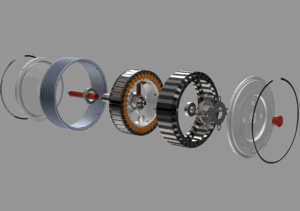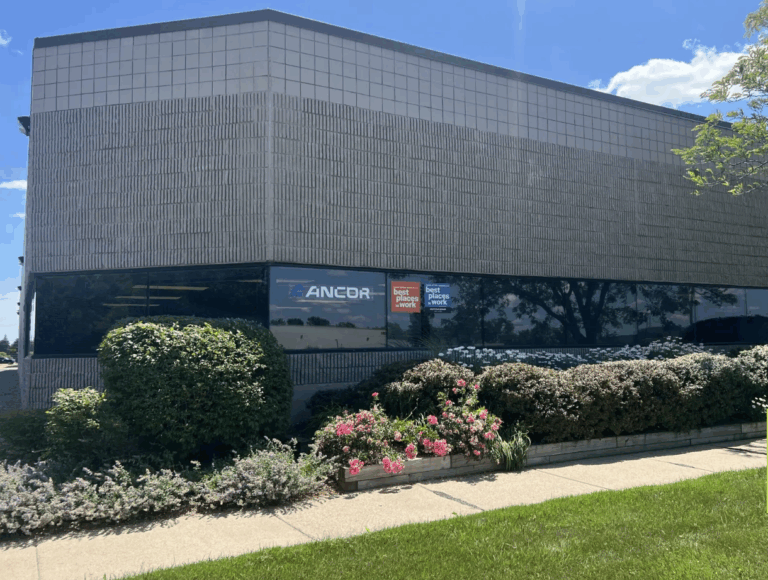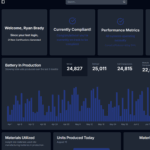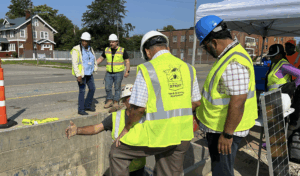
- Kim Kisner
- Business
- 08/19/2025
Ancor Works to Take BMS from Reaction to Prediction

Troy-based Ancor’s roots are in automotive compliance and labeling, but the company has expanded into smart-technology solutions for healthcare, retail, and automotive, including smart battery tracking to stay compliant with local and global regulations.
One of its developments is BattCor, a next-generation platform designed to create a real-time “digital twin” of an electric vehicle battery, enabling real-time monitoring, predictive analytics, and improved lifecycle management—from first use through recycling or repurposing.
SBN Detroit interviewed CEO Jose L. Flores about the evolution of battery management systems and the challenges and opportunities in electric mobility.

Q: Tell us about Ancor Automotive and BattCor.
A: Ancor began 50 years ago as a data management and labeling supplier for OEMs. Three years ago, we launched an innovation hub—now our Innovation Solutions Division to expand into tech-forward and sustainable solutions – just as the EV revolution accelerated. We saw a clear gap: while automakers focused on vehicle production, very few addressed battery lifecycle, repurposing, or compliance at scale. BattCor was built to solve that.
It’s a digital twin that provides real-time battery health insights and predictive analytics, helping optimize charging, extend lifespan, and even return energy to the grid while consolidating siloed data into unified platform for compliance, sustainability, and better decision-making. BattCor isn’t just a product—it’s how we’re helping organizations future-proof their energy strategies through data-driven decision-making.
Q: How is the evolution of battery management systems (BMS) reshaping what’s possible in electric mobility and energy storage?
A: The next frontier is taking BMS from reaction to prediction. And this extends well beyond automotive. Once a battery’s primary life in a vehicle is over, it can still serve as stationary storage—for example, in healthcare facilities or other industries with high energy demands. That second life is an untapped opportunity.
But there are challenges. Recycling EV batteries is still a complex and not widely understood process. In the EU, for example, regulations already require a minimum percentage of recycled materials—13% recycled cobalt, among other components. To meet that, you need full visibility into a battery’s history and condition. That’s where centralized, accessible data becomes essential.
Q: What are the biggest technical or infrastructure challenges in deploying advanced battery systems at scale?
A: The first challenge is data chaos. Without integration, insights are either lost or stuck in silos.
The second is alignment. We don’t yet have a clear, universal path to compliance, and different stakeholders are moving in different directions.
Infrastructure is another question – can the current grid support widespread EV adoption? Are the right regulations in place? Too much of the industry is still operating in silos, and that fragmentation makes it harder to scale sustainable, intelligent solutions.
Q: From a sustainability perspective, how can smarter BMS influence circularity and lifecycle efficiency?
A: When BMS technology incorporates predictive analytics, it enables smarter charging and discharging behavior, batteries charge more efficiently and avoid unnecessary wear. Smart charging – avoiding constant charging cycles – extends battery life and reduces resource consumption.
That’s key for sustainability. The longer we keep batteries in the field, the fewer raw materials we need to extract.

Q: How is demand for better battery intelligence changing?
A: It’s growing rapidly. From a manufacturer’s standpoint, being able to demonstrate that your batteries last longer and perform better is a strategic differentiator. Effective management not only preserves value for the consumer but also reduces warranty issues and improves brand reputation.
Q: What barriers still need to be addressed for mass adoption of advanced BMS platforms?
A: Infrastructure is a major barrier. Some cities have robust charging networks, but many don’t.
Beyond that, we need the grid to operate as a two-way street—able to receive energy from EVs as well as supply it.
What we need now is alignment—not just across tech providers, but across regulators, utilities, and OEMs. The question is: can the rest of the ecosystem move with the same urgency as platforms like BattCor.
Q: Battery safety is critical in EVs and aviation. How is the industry shifting its approach?
A: Battery anxiety is real. With predictive monitoring, we can catch early warning signs like rising temperatures before they escalate. If parameters are trending toward failure, action can be taken immediately. This proactive approach can dramatically reduce the risk of catastrophic events and improve confidence in the technology.
Q: Looking ahead 5–10 years, what’s the most transformational potential of battery intelligence?
A: We’ll see an entirely new level of autonomy in how vehicles and buildings manage energy. Imagine a car that decides when to charge based on grid demand, or a building that balances its energy use based on stored battery health. We could see vehicles and the grid collaborating to optimize distribution, reduce strain during peak hours, and even stabilize the system during emergencies.
Ultimately, companies will seek unified platforms that can integrate sustainability, compliance, tracking, and predictive analysis in one place. There are players who excel in one or two of those areas, but very few that can bring it all together. That’s where Ancor is focused, and BattCor is our blueprint for that future. We’re not just participating in the next wave of battery innovation. We’re helping lead it.
Be sure to subscribe to our newsletter for regular updates on sustainable business practices in and around Detroit.
Kim Kisner
- All
- Business
- Community
- Education
- Events

Farmington Hills-based Modal Motors designs and manufactures next-generation electric motors engineered for high torque density, simplified assembly, and scalability in the United States. The company’s transverse-flux architecture reduces reliance on rare-earth materials while improving efficiency and performance across mobility applications, including EVs, drones, and industrial equipment. By rethinking both motor design and manufacturability, Modal Motors aims to strengthen domestic supply chains and support the growing electrification industry. The...

Revolin Sports, a Holland, Michigan-based startup founded by siblings Hugh and Greta Davis, is aiming to change how sports equipment is made — starting with the fastest-growing sport in America: pickleball. The company is using renewable materials, energy-efficient manufacturing, and recyclable design to lower the environmental footprint of high-performance paddles. SBN Detroit interviewed Hugh Davis, cofounder of Revolin Sports, about how sustainable materials, circular manufacturing, and local partnerships...

Ann Arbor-based NSF is a 501(c)(3) nonprofit that develops public health standards and provides auditing, certification, and training across industries ranging from food and water to consumer products and manufacturing. Its work often intersects with sustainability, helping businesses measure environmental performance and verify progress toward their goals. SBN Detroit interviewed Justin Brown, senior manager of sustainability & product verification at NSF, about the challenges companies face in advancing...







